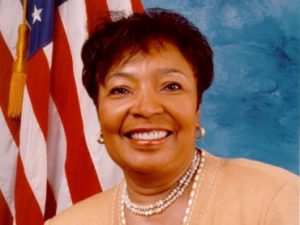
By Congresswoman Eddie Bernice Johnson
In 1796, Edward Jenner propelled medical research and public health forward when he invented the first vaccine. Cowpox, a less deadly form of smallpox, infected milkmaids via sores on a cow’s body. Jenner correctly tested his hypothesis that a cowpox infection could protect a person from smallpox. Until the true development and distribution of vaccines, epidemics such as whooping cough, smallpox, measles, yellow fever, and rubella had ravaged cities throughout the world.
Even with Jenner’s discovery, the 1800s was a difficult time for public health. While the National Vaccine Agency was established in the United States in order to encourage individuals to vaccinate themselves in 1813, poor hygiene practices and the emergence of additional infectious diseases slowed the development of vaccines and increased global outbreaks. Two thirds of the soldiers who lost their lives in the American Civil War were killed by uncontrolled infectious diseases. Yellow fever crippled the Mississippi Valley while measles ravaged Native American tribes in Arizona. At the end of the century the U.S. faced its first polio epidemic.
During the 1900s, vaccine research and development experienced significant progress. Scientists discovered methods for growing and treating viruses in the laboratory. Researchers not only created the first polio vaccine, they were also able to focus on common infectious diseases like measles, mumps, and rubella. U.S. law also backed vaccinations. In 1905, the U.S. Supreme Court upheld the constitutionality of mandatory smallpox vaccines to preserve public health. By 1922, many schools required a smallpox vaccine before a child could attend.
Because of vaccine research and routine immunizations, an infectious disease that was categorized as uncontrollable a century earlier was successfully eradicated. Since the implementation of vaccines, instances of whooping cough have decreased by 81 percent, measles by 99 percent, and mumps by 99 percent.
While many countries still struggle with outbreaks of diseases eradicated from the U.S. decades ago, some in our country choose to forego the availability of state-of-the-art medicines and choose not to vaccinate their children. Ultimately, this jeopardizes the health of the general public. Just last month, visitors to Disneyland in California were exposed to measles, causing at least 100 cases identified by the Centers for Disease Control and Prevention.
Unfortunately, parents who choose not to vaccinate their children are also making a choice for the individuals that their children contact. Herd immunity, an important benefit of widespread vaccination, helps to protect people who cannot be vaccinated because of age or pre-existing medical conditions by
ensuring that everyone they come in contact with is immunized. However, as more and more people refuse routine immunizations, the risk of outbreak is much worse. In 2014, the U.S. experienced the worst measles and whooping cough outbreaks in decades.
As a non-practicing registered nurse, parent, and grandparent, I assure my constituents that the benefit of routine immunization is invaluable. Like any medical procedure, vaccines can carry some risks. However, the benefit of vaccines certainly outweighs the risks. The reality is that vaccines are the best defense we have against diseases that are both controllable and preventable.





…until the medical and drug communities come forth to “the people” with all the data about the pro and con conditions that affect the issue of forced vaccinations, I have little to say about this latest “hoopla”…except “tell the whole story”…